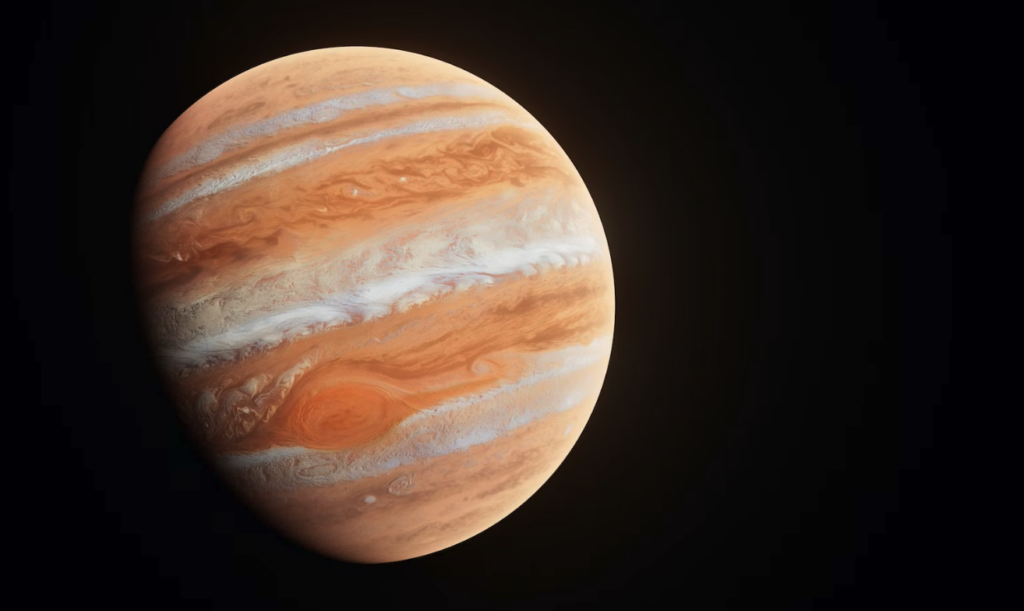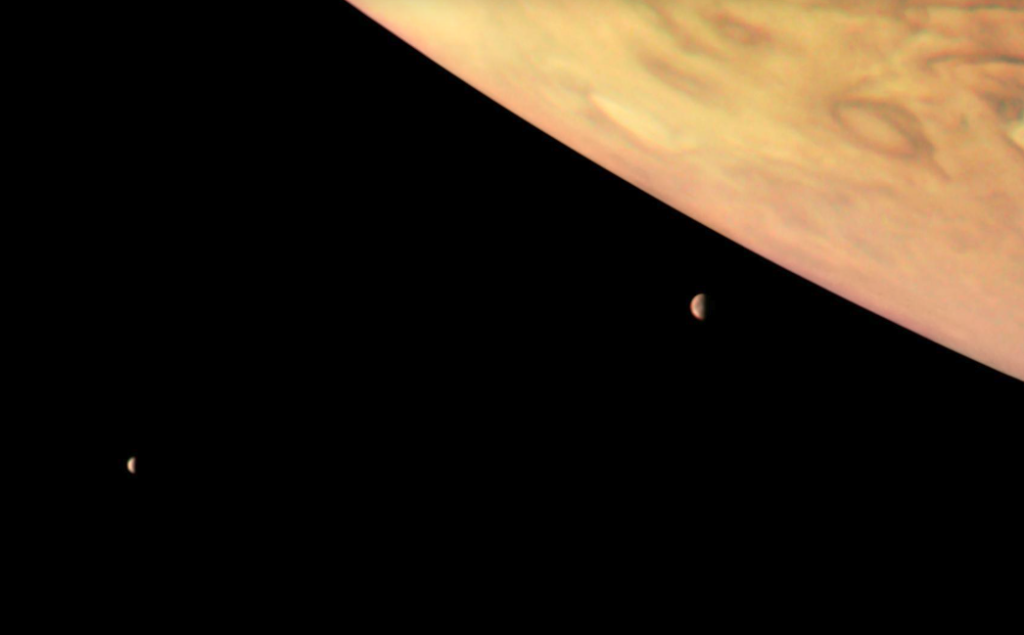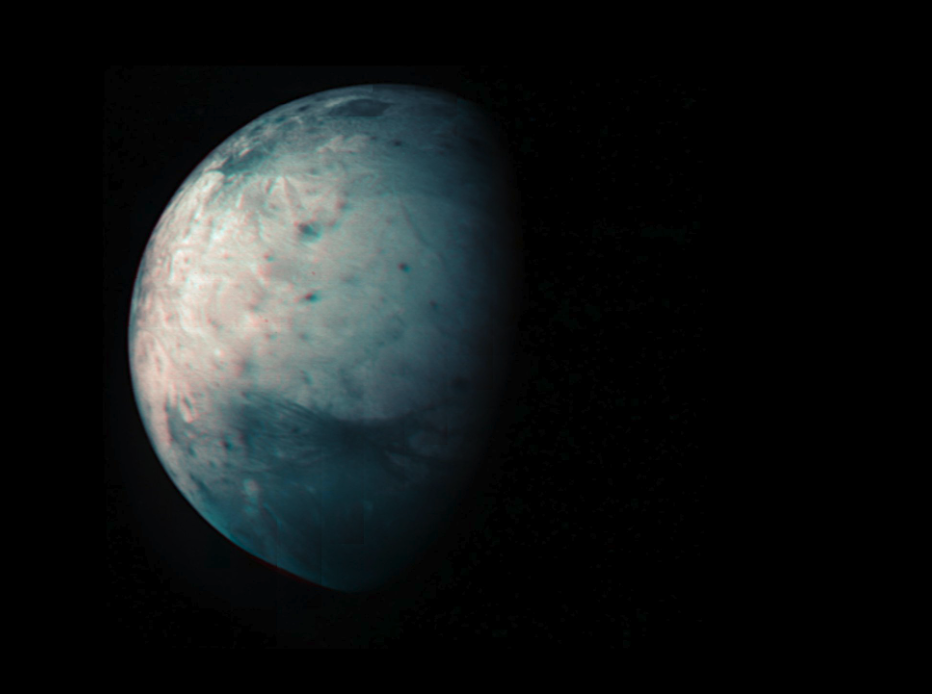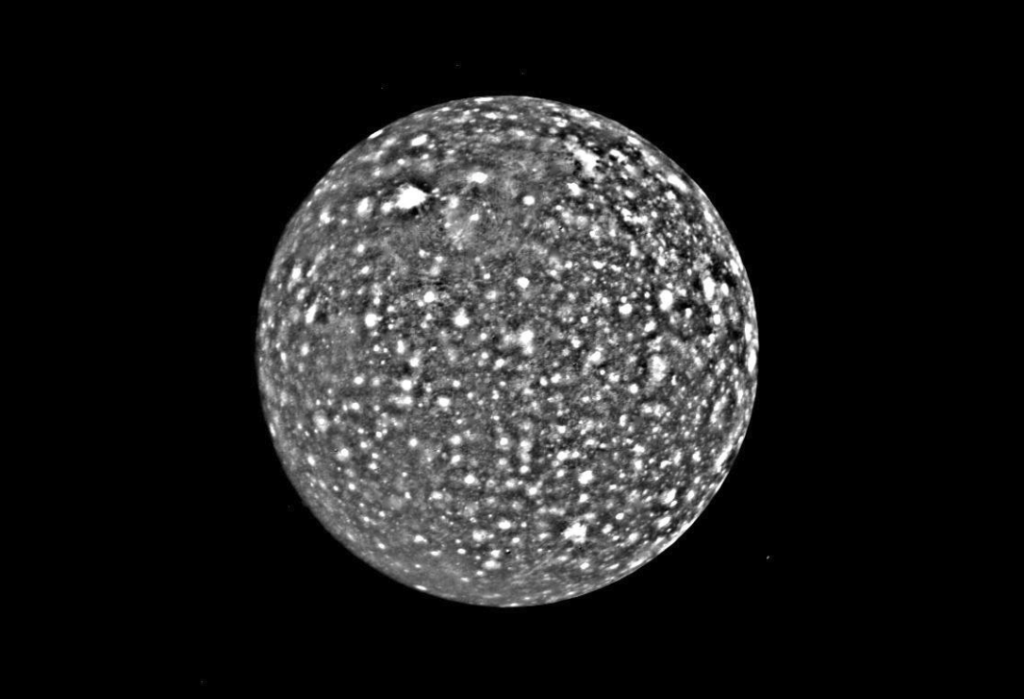How Many Moons Does Jupiter Have?
In 1609 Galileo Galilei built a telescope and discovered four moons orbiting Jupiter. Because of his discoveries, today we are able to answer the question: How many moons does Jupiter have? We now know that Jupiter has eighty moons. Most of the moons are objects that Jupiter captured with its intense gravity.
Conventional 1609 wisdom was that Earth was the center of the universe, and almost all celestial bodies orbited around Earth. Galileo’s findings shocked, stunned, and invigorated the scientific community.

Today four hundred and fourteen years later, the Galilean moons are at the cusp of scientific excitement. A NASA mission (JUNO) to Jupiter concluded its primary mission in 2021. The spacecraft is now collecting data from three of four Galilean moons. The data collected will be used in preparation for two upcoming NASA Europa and JUICE missions.
Table of Contents
The Galilean Moons
Initially, Galileo believed that the four objects he detected near Jupiter were stars. After additional observation, Galileo recognized that the objects were orbiting around Jupiter.
Galileo named the moons (Jupiter I through Jupiter IV.) Simon Marius discovered the moons soon after Galileo and gave each moon a different name based on Greek mythology.
The Galilean moons hold a special place in astronomers’ hearts.
- First celestial objects detected with a telescope.
- The moons are the first objects proven to orbit around something other than the sun.
Io
Io (known as the moldy pizza) is tidally locked to Jupiter. Io no longer has an icy surface. Today the surface of Io has molten lava lakes.
Tidal Forces
As a tidally locked moon of Jupiter, Lo is rotating in the same amount of time it takes to orbit around the planet. The same face of Io always faces Jupiter, just like Earth’s moon.
Heating
- Jupiter (and the other moons) tug on Io through their gravitational forces.
- Heat is a byproduct of the gravitational force.
- The heat is dissipated inside Io as the interior ice melts

Jupiter’s Moons and Gravitational Pull
On Earth, we have ocean tides caused by the moon’s gravity. The moon’s gravity is stronger on the side of the Earth facing the moon, so the oceans migrate toward the side of the Earth that’s closest to the moon.
Io has no surface oceans, but it has oceans beneath the mantle.
- The gravity from Jupiter pulls Io’s core and fluid in one direction.
- The gravity from Europa and Ganymede tugs on Io in a different direction.
The combined gravitational effects cause tidal bulges. The ground moves up and down on the surface of Io. Up and down to the tune of 300 feet (100 meters). The Earth also has a solid ground tide but is more in tune toward 8 inches ( 20cm).
Volcano
- 400+ active volcanoes are a result of tidal heating.
- The volcanoes are the “hotspots” of the solar system with temperatures exceeding 2780℉ ( ⅓ suns temperature)
- Some volcanoes’ rings are approximately the size of California!
- Volcanos send plumes of frozen sulfur dioxide approximately 311 miles (500 km) into space.
Ganymede
The biggest moon in our solar system, is also larger than Mercury.
- Primarily composed of rock and ice.
- 1.5 times larger than Earth’s moon
- The only moon with a magnetic field.

Ozone Layer
Ganymede has a tiny ozone layer.
- The ozone layer is created when Ganymede orbits through charged particles in Jupiter’s magnetic field.
- Charged particles strike the icy surface crust and disrupt water molecules.
Aurorae
Similar to Earth, Ganymede has aurorae (AKA Northern Lights.) Scientists studying the aurorae noticed that when Jupiter’s magnetic field changes, Ganymede’s north and south poles aurorae change as well. The oscillating magnetic fields led scientists to conclude that salt water is underneath Ganymede’s crust.
Underground Ocean
- Planetary scientists believe that Ganymede has an underground saltwater ocean approximately 95 miles (150 km) beneath the moon’s crust.
- The ocean’s depth is 60 miles (100 km). That’s 9.6 times deeper than the depth of the deepest ocean point (Challenger Deep) on Earth at 6.8 miles (11 km).
- Saltwater oceans may be home to living organisms.
- The underground ocean may have more water than all of the water on Earth’s surface.
Europa
Europa is astrobiologists’ “dream planet” with an atmosphere composed of oxygen and an underground ocean of salt water. Europa is a “middle-ground” of the Galian moons with a mix of rock, ice, and water. The ice serves as a skin to an underworld ocean.
- Produces ten times more oxygen than hydrogen
- Energy is based on chemical reactions and is not reliant on tidal heating.
- A Saltwater ocean may contain 2X more water than all of Earth’s oceans.
- The ocean is estimated to be four million years old.
- Ocean water is in contact with the rocky ocean floor, which is fuel for organics.
- Old enough that some life forms may have started
- Life forms may have evolved. Most likely single-cell organisms.
- Organisms that don’t rely on sunlight (photosynthesis)
A new NASA mission, the Europa Clipper, is slated for liftoff in 2026. While the Mars Exploration missions search for signs of fossilized life, the Europa Clipper mission may find signs of present life.
Callisto
The oldest and most heavily cratered moon in the solar system, is primarily composed of rock and ice. Long overshadowed by the other Galilean moons, Callisto roared back into the limelight in the 1990s.
Galileo’s spacecraft collected data that led scientists to speculate that the moon may have an ocean deep beneath the surface. Estimating a depth of 155 miles (250 km), scientists are curious if it’s truly an ocean or if the data represents a rocky core.
If Callisto has an ocean, underlayer chemical interactions that support life may be occurring.

Jupiters Smaller Moons
The Galilean moons formed at the same time as Jupiter. Jupiter’s other smaller moons are suspected to be asteroids captured by Jupiter’s gravity.
Other moons may have been a byproduct of a larger moon of Jupiter that collided with another moon. Some may be dwarf planets captured by Jupiter’s gravity. It’s challenging to identify how many moons does Jupiter have. Today the answer is 80 moons. The answer may change when the new NASA Missions collect data from Jupiter’s moons!
Can Humans Live on Jupiter’s Moons?
Popular science fiction would have us all headed for Jupiter’s moons to start a colony. The radiation levels would be highly problematic for sustained, unshielded surface life on Lo, Europa, and Ganymede.
- Humans would most likely need to live beneath the icy water crust on Europa. The ice itself would protect from the radiation, as would the water near the ocean’s surface.
- Humans could use Callisto as a base but without water access.
- Callisto has a radiation level that’s higher than Earth’s but is much (much) lower than the other Galilean moons.
How Many Moons Does Jupiter Have?
Jupiter has eighty moons. The IAU has recognized fifty-seven moons, and twenty-three moons are awaiting confirmation.
NASA will send two missions to Jupiter’s moons within the next few years, so the number of moons may change!
